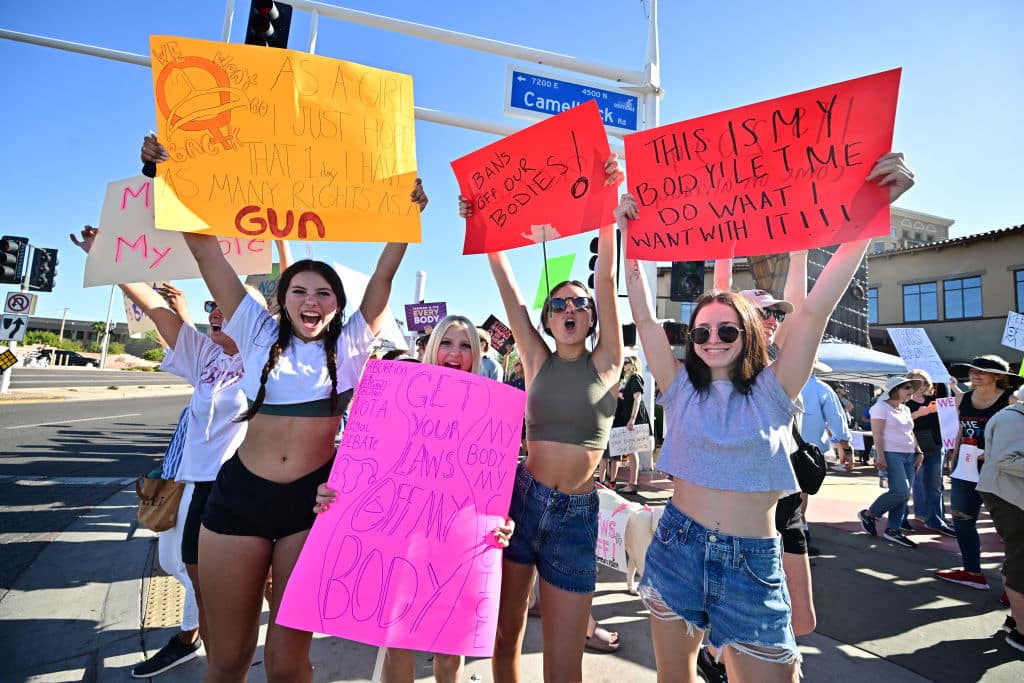Young women becoming increasingly irreligious in US
Young women are leaving US Churches in “unprecedented numbers”, according to a new survey from the American Enterprise Institute. It demonstrates, argues Carmel Richardson in The American Conservative, what some had already begun to speculate: that as young women move politically left as a group, they also become more irreligious. AEI’s survey of some 5,500 Americans of The post Young women becoming increasingly irreligious in US appeared first on Catholic Herald.

Young women are leaving US Churches in “unprecedented numbers”, according to a new survey from the American Enterprise Institute.
It demonstrates, argues Carmel Richardson in The American Conservative, what some had already begun to speculate: that as young women move politically left as a group, they also become more irreligious.
AEI’s survey of some 5,500 Americans of various ages examined the sex-based breakdown of which Americans are leaving churches of every denomination due to being “disaffiliated”.
According to the survey, older generations, such as Millennials, Generation Xers and Baby Boomers, who left their childhood Church numbered more male than female, by 6 to 14 percentage points. Generation Z, however, flipped this: the majority of disaffiliated are female by 8 percentage points.
“Over the last two decades, which witnessed an explosion of religious disaffiliation, it was men more than women who were abandoning their faith commitments,” notes AEI. “In fact, for as long as we’ve conducted polls on religion, men have consistently demonstrated lower levels of religious engagement. But something has changed…the pattern has now reversed.”
At the same time, the survey found that nearly two-thirds of Generation Z women in the cohort disagreed with the statement that “most churches and religious congregations treat men and women equally”. The conclusion from these two findings in relation to how to stop the exodus by young women might seem to some, Richards suggests, that Churches should become more egalitarian to win over those disaffiliated young women.
“There are many problems, of course, with letting the opinion of modern irreligious women override centuries of Christian theology,” Richardson says, before noting: “What is more interesting here is how neatly this picture maps onto another interesting development in our modern era, that of feminised higher education”.
In 2021, she notes, the Wall Street Journal published a report titled “A Generation of American Men Give Up on College.” The report detailed the ever-widening education gap between men and women: both in acceptance rates and graduation rates, it showed that men are falling far behind women.
The result of all this – what is happening in US churches and universities – is a situation developing whereby young women outnumber young men at elite universities, while young men outnumber young women at church. The implications of this are far reaching, from impacting values systems, levels of “happiness” and life satisfaction, marriage, family formation, and more.
“To a great extent the level of any civilisation is the level of its womanhood,” Bishop Fulton Sheen wrote in Love, Marriage and Children published in the 1960s. “When a man loves a woman, he has to become worthy of her. The higher her virtue, the more noble her character, the more devoted she is to truth, justice, goodness, the more a man has to aspire to be worthy of her. The history of civilisation could actually be written in terms of the level of its women.”
Today’s young women, Richardson says, are being steeped in an atmosphere on most college campuses that “is not merely irreligious, but often anti-religious”, adding: “Students have great negative incentives to leave the faith while pursuing an advanced degree.”
Young men, on the other hand, she says, might be influenced by a similar phenomenon but which goes in the opposite direction. Once “they have rejected the prestige of the Ivory Tower”, what is there to lose, Richardson posits, in terms of social status by becoming or staying Christian, and without regard to what young women might think of them (she highlights how this can also result in a drift for some young men toward the radical Right).
It’s an update to the age-old Battle of the Sexes, but one in which both sides could become even more entrenched in their positions due to their exposure and experiences in the increasingly off-kilter realm of modern society.
“One half of young Americans are less likely to be brainwashed in college, less likely to take on enormous debt for a job, and more likely to find purpose and satisfaction in religion,” Richardson says. “The other half are women.”
Photo: Pro-abortion demonstrators in Scottsdale, Arizona, 15 April 2024. The top court in Arizona on 9 April ruled that a near total ban on abortion is enforceable, thrusting the issue to the top of the agenda in a key US presidential election swing state. (Photo by FREDERIC J. BROWN/AFP via Getty Images.)
![]()
The post Young women becoming increasingly irreligious in US appeared first on Catholic Herald.














